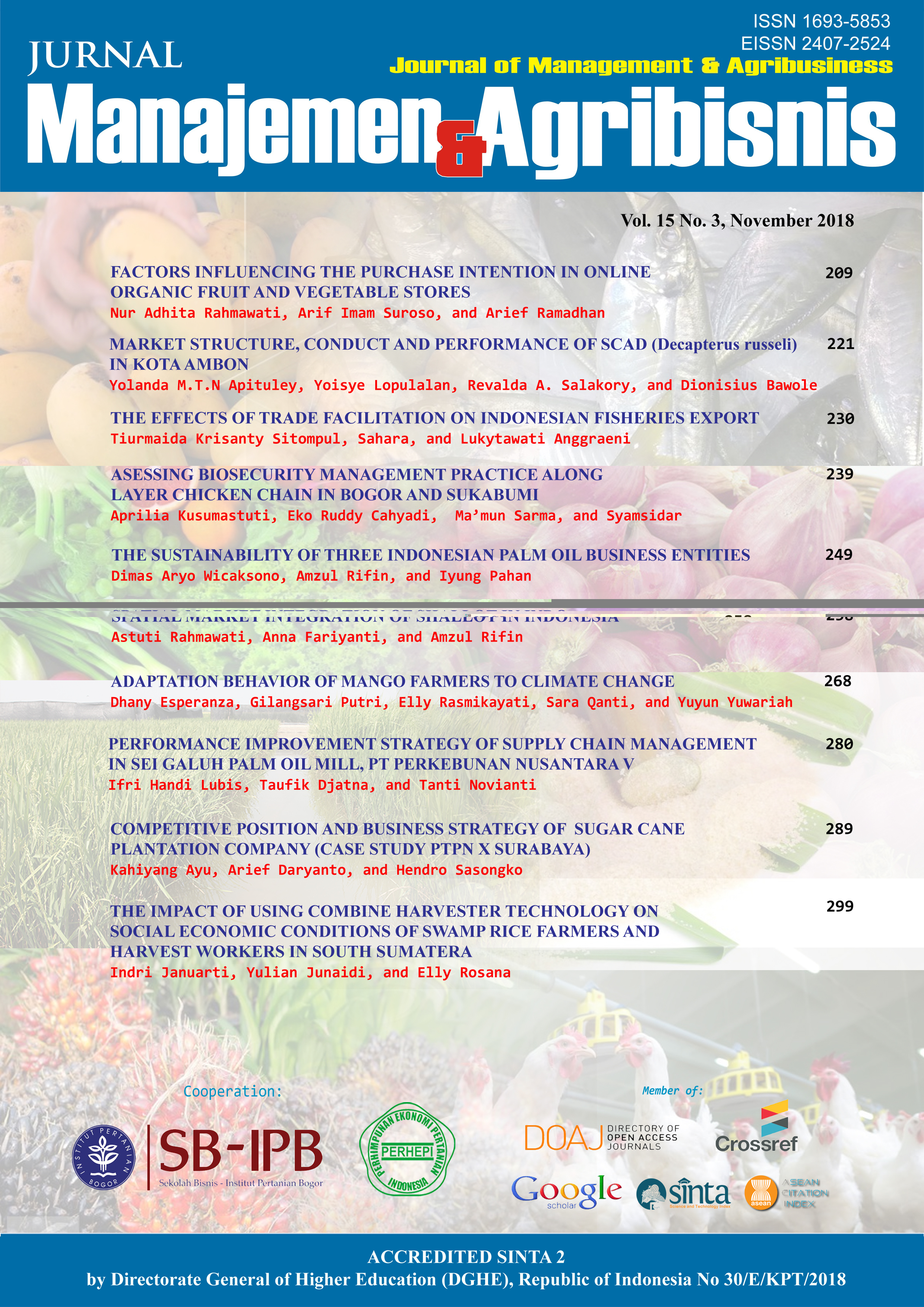The Impact of Using Combine Harvester Technology on Social Economic Conditions of Swamp Rice Farmers and Harvest Workers in South Sumatera
Abstract
The objectives of this research were: (1) to analyze the use of labor allocation, productivity and income of swamp rice farmers of users and non-users of combine harvester technology; (2) to explore the impact of combine harvester technology and other factors on rice farm income; and (3) to analyze the impacts of using combine harvester technology on the socio-economic condition of farmers and harvest workers. From the result of the research, it can be seen that the amount of labor allocation in swamp rice farming conducted by farmer users of combine harvester is smaller than that of the non-users, that is 57,60 HOK and 117,63 HOK respectively. The productivity of swamp rice farming on the users is 4.543.56 kg per hectare per year in the form of dry grains whereas that of the non-users only reached 4,423,33 kg per hectare per year. Income of swamp rice farming using combine harvester is larger if compared with that of the non users that is equal to Rp14,942,737.16 per hectare per year for the users and Rp9,954,095.76 per hectare per year for the non-users. From the result of regression analysis, it can be seen that dummy variables of combine harvester technology, experience of farming, productivity, fertilizer cost, pesticide cost and labor cost have significant impacts on rice farmer income. Combine Harvester technology has both positive and negative impacts on social, economic and technical conditions in swamp rice farming for the farmers and worker harvesters.
Keywords: combine harvester, social, economy, rice, swamp
Authors
Authors who publish with this journal agree to the following terms:
- Authors retain copyright and grant the journal right of first publication with the work simultaneously licensed under a Creative Commons Attribution License that allows others to share the work with an acknowledgement of the work's authorship and initial publication in this journal.
- Authors are able to enter into separate, additional contractual arrangements for the non-exclusive distribution of the journal's published version of the work (e.g., post it to an institutional repository or publish it in a book), with an acknowledgement of its initial publication in this journal.
- Authors are permitted and encouraged to post their work online (e.g., in institutional repositories or on their website) prior to and during the submission process, as it can lead to productive exchanges, as well as earlier and greater citation of published work (See The Effect of Open Access).

